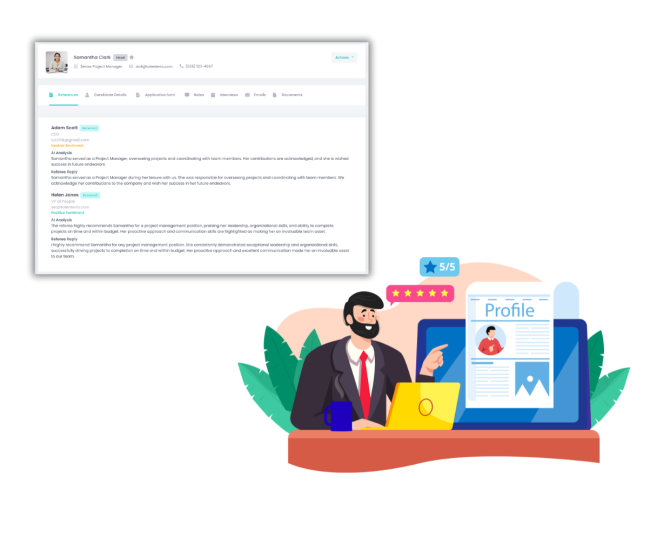
When working in a group, people frequently adopt different roles and behaviors. The impact of these positions and actions on individuals and the group as a whole is referred to as “group dynamics.”
A group with positive dynamics can be easily identified. Team members have faith in one another, work together to reach a common goal, and keep one another accountable for getting things done. Furthermore, researchers have discovered that a team with a positive dynamic is rough twice as creative as a group with a negative dynamic.
Poor group dynamics, on the other hand, can sabotage effective decisions and work performance. It arises when a lack of leadership, excessive deference to authority, and apprehension about being evaluated.
Managing group dynamics for teams can lead to greater work engagement, customer satisfaction, and overall high profitability for companies. This article will discuss what strategies you can implement today to improve the group dynamics among your team.
1. Get to know the members of your team
Companies need to first and foremost understand their team members. What are their strong points and places where they could improve? What personality traits do they have? These are things you'll need to be aware of as the leader of your organization.
You should also be familiar with the stages of team development. The stages are developing, storming, norming, performing, and adjourning. It's crucial to know what stage your team is at. It will help you avoid difficulties and promote positive group dynamics.
A team health check might help you diagnose what's wrong with your team. In a quiet, safe, and confidential environment, observe your team at work and perform individual interviews. To learn as much as possible about your team's challenges, speak with other relevant people such as customers and line managers.
2. Fix issues quickly
There isn't a single group that is fully free of issues. If you notice disputes in your team, you must address them as soon as possible. To accomplish this, encourage your team members to converse. Depending on the situation, it might be a private dialogue or a group discussion - each team and individual is unique in this regard.
This method aims to encourage your team members to speak up and not hide their true feelings and views. It's also a lot easier to conduct these discussions when issues initially develop than after they've become regular. Conflict resolution assists team members in maintaining positive team dynamics.
3. Assign well-defined roles and responsibilities
A team of employees who do not grasp their roles and responsibilities is a clear symptom of inadequate leadership. As one might expect, a lack of clarity in this area leads to unfavorable group dynamics. Fortunately, you can avoid this problem by ensuring that everyone on your team understands what is expected of them and how to achieve it.
Begin by discussing your team's overall mission. Then, define each person's role and equip them with the knowledge and resources they need to succeed.
We also recommend that you write a team structure that lays out what we just said: the team's objective and each team member's responsibility. That way, if and when your group becomes uncertain, they can always refer back to it.
To succeed, teams and individuals need to be laser-focused. You can drive team members to handle their responsibilities and work together more successfully if you design a team charter and assign clearly defined roles. A well-written charter also aids in the establishment of clear behavioral and outcome goals. It establishes guidelines via which you can hold underperforming team members accountable.
4. Boost morale by organizing team-building exercises
There will undoubtedly be trust concerns and some level of discomfort when your team initially comes together. It's perfectly normal. Learning about people and how they work takes time, but you can certainly take steps to improve group dynamics from the get-go. Team building is an excellent approach to breaking down barriers and raising morale in groups. Try a couple of team-building tasks to help speed up the "know you" phase and start working significantly faster.
Team building exercises should be done by teams who have worked together for a long time. Team-building exercises strengthen individual relationships and foster a positive team culture. These exercises can be a lot of fun and help people discover common ground in various ways.
5. Promote cohesiveness among the group
Task cohesion or social cohesion are the two types of group dynamics. A team with a higher level of social cohesiveness is more lively, and when work involves fun and games, a strong relationship is formed. On the other hand, task cohesiveness refers to how the team's competencies and skills are combined to achieve effective results.
Cohesiveness has several advantages, including increased employee satisfaction, reduced absenteeism, lower turnover, and increased productivity.
6. Strengthen communication between team members
Transparency and efficient communication help teams meet their objectives more quickly and easily. However, not every member of the team has naturally developed communication abilities. To encourage your employees to improve their communication skills, you could apply a variety of strategies such as:
- Sharing essential information quickly: The sooner you can get important information to your team, the better.
- Encouraging team members to communicate: You should also encourage team members to communicate with one another. Look for strategies to engage those in your group who aren't as comfortable giving their thoughts.
- Always communicating respectfully: Make sure you're a respectful communicator and that the team follows the team leader. Allow no interruptions when someone is speaking in a group situation. Also, make certain that each member of the team has an opportunity to speak.
- Taking the initiative: To improve collaboration and interpersonal interactions among team members, you can utilize approaches such as self-advocacy development, group decision-making development, or basic team-building activities.
- Addressing remote dynamics: You can teach your team how to develop successful remote communication if they work remotely during the epidemic or due to job requirements.
7. Facilitate the growth of team leaders
Every team needs a driving force at its center, and team leaders are that force. As a result, you need to have strong and experienced team leaders who can effectively create goals and allocate work.
Create a list of critical areas for team leaders to improve to help them grow as leaders. These could include time management, organizational skills, public speaking, managerial skills, and more.
8. Make adaptability and flexibility a top priority
The leaders of teams should keep in mind that flexibility is a blessing to a team, and adapting to new conditions and information can allow a team to improve group dynamics.
If a new team member, for instance, enters the team, a flexible group will adapt to this new working situation and build new dynamics with them instead of trying to retain the same dynamic.
9. Promote differences of opinion
Diversity is not something you want to have; it's something you must have. Even though it might lead to conflict, it is essential for excellent performance. People in diverse teams can use their motivational abilities to their advantage. The detail-oriented person may double-check everything to ensure the tiniest details of the project is great, while the big-picture thinkers are already planning the project's next phase. Teams can operate like a well-oiled machine as long as everyone recognizes that the diversity of styles contributes to the group's overall strength.
10. Stay Vigilant
You must be on the lookout for signs of negative group dynamics at all times. Keep an eye out for unwanted behaviors like bullying, groupthink, and freeriding so you can deal with them quickly. It is also necessary to assess the frequency with which unanimous choices are made. Address and eradicate these root causes as soon as possible if you notice them.
Positive behaviors such as successful teamwork, idea sharing, trust, and respect should be reinforced.
11. Celebrate Achievements
When a project ends or an important milestone is reached, it is ideal for promoting team spirit. Share your accomplishments with the rest of the organization, whether during an all-staff meeting, by email, or on the intranet, mention team members by their first and last names, as well as their participation in the project. Celebrate the occasion as a team by sharing a meal or having a drink after work.
Build the Best Team With Talenteria
Positive group dynamics are critical to your team's success. By improving group dynamics, you can boost employee productivity and satisfaction while also ensuring that your teams meet their deadlines. The tips in this article will assist you in effectively managing your team and fostering a positive group dynamic.
Still, to put your best foot forward, it’s necessary to consider group dynamics even during the recruitment and hiring process. Talenteria gives you everything you need to recruit the best team members - from talent pool management to a career site builder. Contact us today to learn more about what we can do for your organization.






